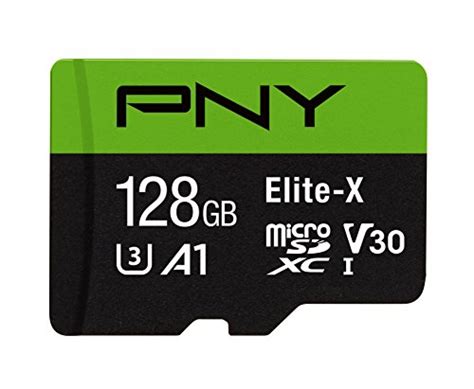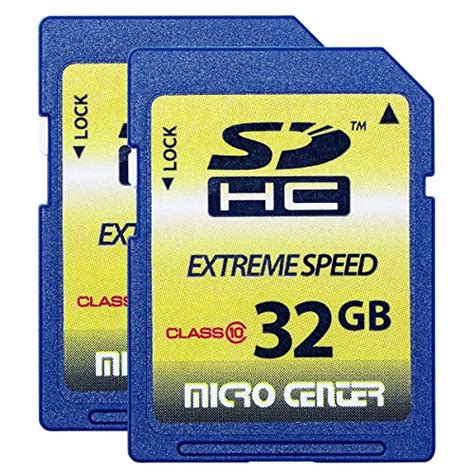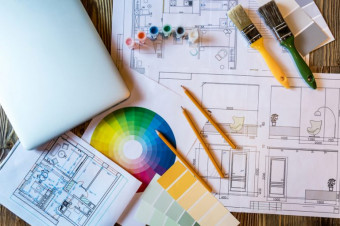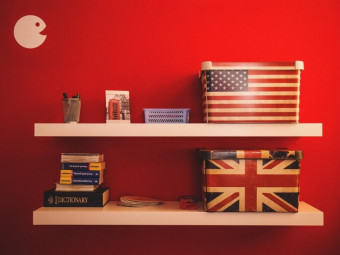Neoclassical Art Definition, Characteristics, History of Neoclassicism. MAIN A-Z INDEX - A-Z of ART MOVEMENTS
Cupid and Psyche (1786-93, Louvre) A Neoclassical masterpiece by the Italian sculptor Antonio Canova. See Male Nudes in Art History. See Female Nudes in Art History.
NEOCLASSICISTS For a list of Neoclassicist painters/ sculptors, see: Neoclassical Artists.
Contents
• Summary • Origins & Scope • Neoclassicism - Characteristics • Painters • Sculptors • Architects Detailed Information • Neoclassical Architecture (1640-1850) • Neoclassical Painting (c.1750-1860) • Neoclassical Sculpture (c.1750-1850)
PAINTING COLOURS For details of colour pigments used by Neoclassical painters, see: Eighteenth Century Colour palette.
EVOLUTION OF VISUAL ART For the chronology and dates of key events in the evolution of visual arts around the world see: History of Art Timeline.
ART OF ANTIQUITY For details of art from ancient Greece and Rome, see: Greek Sculpture (650-27 BCE) Classical Greek Painting Roman Sculpture (20 BCE-120 CE)
Summary
The artistic style known as "Neoclassicism" (also called "classicism")was the predominant movement in European art and architecture during the late 18th and early 19th centuries. It reflected a desire to rekindle the spirit and forms of classical art from ancient Greece and Rome, whose principles of order and reason were entirely in keeping with the European Age of Enlightenment. Neoclassicism was also, in part, a reaction against the ostentation of Baroque art and the decadent frivololity of the decorative Rococo school, championed by the French court - and especially Louis XV's mistress, Madame de Pompadour - and also partly stimulated by the discovery of Roman ruins at Herculaneum and Pompeii (1738-50), along with publication in 1755 of the highly influential book Thoughts on the Imitation of Greek Works of Art, by the German art historian and scholar Johann Winckelmann (1717-68). All this led to a revival of neoclassical painting, sculpture and architectural design in Rome - an important stopover in the Grand Tour - from where it spread northwards to France, England, Sweden and Russia. America became very enthusiastic about Neoclassical architecture, not least because it lent public buildings an aura of tradition and permanence. Neoclassical painters included Anton Raphael Mengs (1728-79), Jacques-Louis David (1748-1825), Angelica Kauffmann (1741-1807) and Jean-Auguste-Dominique Ingres (1780-1867); while sculptors included Jean-Antoine Houdon (1741-1828), John Flaxman (1755-1826), Antonio Canova (1757-1822), and Bertel Thorvaldsen (1770-1844). Among the best known exponents of neoclassical architecture were Jules-Hardouin Mansart (1646-1708), Jacques Germain Soufflot (1713-80), Claude Nicolas Ledoux (1736-1806), John Nash (1752-1835), Jean Chalgrin (1739-1811), Carl Gotthard Langhans (1732-1908), Karl Friedrich Schinkel (1781-1841), and Benjamin Henry Latrobe (1764-1820).
For examples of interior design in France during the neoclassical period, see: French Decorative Art. For fine furnishings under Louis XV and Louis XVI, see: French Furniture (1640-1792). For architects, artists and craftsmen, please see: French Designers..
Origins & Scope
The revival of artistic canons from Classical Antiquity was not an overnight event. It built on Renaissance art itself, as well as the more sober styles of Baroque architecture, the mood of Enlightenment, the dissatisfaction with the Rococo, and a new respect for the earlier classical history painting of Nicolas Poussin (1593-1665), as well as the classical settings of Claude Lorrain's (1600-82) landscapes. Furthermore, it matured in different countries at different times. Neoclassical architecture actually originated around 1640, and continues to this day. Paradoxically, the abundance of ancient classical buildings in Rome meant that the city at the heart of the neoclassicism movement experienced little neoclassical architecture.
In addition, despite appearances, there is no clear dividing line between Neoclassicism and Romanticism. This is because a revival of interest in Classical Antiquity can easily morph into a nostalgic desire for the past.
Neoclassicism - Characteristics
Neoclassical works (paintings and sculptures) were serious, unemotional, and sternly heroic. Neoclassical painters depicted subjects from Classical literature and history, as used in earlier Greek art and Republican Roman art, using sombre colours with occasional brilliant highlights, to convey moral narratives of self-denial and self-sacrifice fully in keeping with the supposed ethical superiority of Antiquity. Neoclassical sculpture dealt with the same subjects, and was more restrained than the more theatrical Baroque sculpture, less whimsical than the indulgent Rococo. Neoclassical architecture was more ordered and less grandiose than Baroque, although the dividing line between the two can sometines be blurred. It bore a close external resemblance to the Greek Orders of architecture, with one obvious exception - there were no domes in ancient Greece. Most roofs were flat.
NOTE: For other important historical stylistic trends like Neoclassicism, see Art Movements, Schools (from 100 BCE).
Neoclassical Painters
Founders and famous artists of Neoclassicism include the German portraitist and historical painter Anton Raphael Mengs (1728-79), the Frenchman Joseph-Marie Vien (1716-1809) (who taught J-L David), the Italian portrait painter Pompeo Batoni (1708-87),the Swiss painter Angelica Kauffmann (1741-1807), the French political artist Jacques-Louis David (1748-1825), and his pupils Jean-Germain Drouais (1763-88), Anne-Louis Girodet de Roucy-Trioson (1767-1824), J.A.D. Ingres (1780-1867) the French master of academic art, and the American expatriate Benjamin West (1738-1820). In Britain, celebrated followers of Neoclassicism included: Sir Joshua Reynolds and the Irish virtuoso James Barry.
The most recent phase of neoclassicism - the Classical Revival in modern art - emerged between about 1900 and 1930, with active participants including Pablo Picasso (1881-1973), Fernand Leger (1881-1955) and Giorgio de Chirico (1888-1978).
Famous Neoclassical Paintings
• Anton Raphael Mengs The Penitent Mary Magdalene (1752), Gemaldegalerie, Dresden. Parnassus (1761) Villa Albani, Rome. The Immaculate Conception (1770-79), Musee du Louvre. • Jean-Auguste-Dominique Ingres La Grande Odalisque (1814), Louvre. The Valpincon Bather (1808), Louvre. Portrait of Madame Moitessier (1844-56) National Gallery, London. The Turkish Bath (1862) Louvre. • Jacques-Louis David Oath of the Horatii (1784), Musee du Louvre. The Lictors Bringing to Brutus the Bodies of His Sons (1789) Louvre. Death of Marat (1793), Musees Royaux des Beaux Arts, Brussels. • Angelica Kauffmann Self Portrait (1787) Uffizi Gallery, Florence. • Jean-Germain Drouais The Dying Athlete (Wounded Warrior) (1785) Louvre. • Anne-Louis Girodet de Roucy-Trioson The Burial of Atala (1808) Louvre. • Pablo Picasso Two Nudes (1906) Museum of Modern Art, New York. Seated Woman (Picasso) (1920) Musee Picasso, Paris. Large Bather (1921) Musee de l'Orangerie, Paris. Two Women Running on the Beach (The Race) (1922) Musee Picasso, Paris. • Fernand Leger The Mechanic (1920) National Gallery of Canada. Three Women (Le Grand Dejeuner) (1921) Museum of Modern Art, New York. Nudes against a Red Background (1923) Kunstmuseum, Basel. Two Sisters (1935) Gemaldegalerie SMPK, Berlin. • Giorgio de Chirico The Uncertainty of the Poet (1913) Tate, London. Song of Love (1914) Museum of Modern Art, New York.
Neoclassical Sculptors
Leading Neoclassical sculptors include Antonio Canova (1757-1822) who sculpted for Popes and Napoleon; the Englishman John Flaxman (1755-1826) who also designed Jasperware for Wedgwood; the Danish artist Bertel Thorvaldsen (1770-1844) known for his Jason with the Golden Fleece (1802-3, Thorvaldsen Museum, Copenhagen); and Jean-Antoine Houdon (1741-1828), best known for his portrait busts in marble.
Famous Neoclassical Sculptures
• Franz Xaver Messerschmidt (1736-1783) Character Head series of 69 portrait busts. • Jean-Baptiste Pigalle (1714-85) Voltaire (1770-76) Louvre, Paris. • Joseph Nollekens (1737-1823) Venus (1773) J Paul Getty Museum, Los Angeles. • Jean-Antoine Houdon (1741-1828) Voltaire (1781) Bibliotheque de la Comedie Francais, Paris. • John Flaxman (1755-1826) Admiral Horatio Nelson (1808) St Paul's Cathedral, London. • Antonio Canova (1757-1822) Apollo Crowning Himself (1781) J Paul Getty Museum, Los Angeles. Theseus and the Minotaur (1781-83), Victoria and Albert Museum, London. Johann Gottfried Schadow (1764-1850) The Crown Princesses Louise & Friedrike of Prussia (1797) Berlin. • Bertel Thorvaldsen (1770-1884) Jason with the Golden Fleece (1802-3) Thorvaldsen Museum, Copenhagen. Alexander the Great Entering Babylon (1812) Palazzo del Quirinale, Rome. Cupid and Psyche (1796-7), Louvre, Paris. Perseus and the Head of Medusa (1797-1801) Vatican Museums, Rome. • Horatio Greenough (1805-1852) George Washington (1840) Smithsonian American Art Museum.
Neoclassical Architects
France Jacques Germain Soufflot (1713-80) Claude Nicolas Ledoux (1736-1806) Jean Chalgrin (1739-1811) Britain John Nash (1752-1835) Sir John Sloane (1753-1837) Sir Robert Smirke (1780-1867) Germany Carl Gotthard Langhans (1732-1908) Karl Friedrich Schinkel (1781-1841) USA Thomas Jefferson (1743-1826) William Thornton (1759-1828) Benjamin Latrobe (1764-1820) Charles Bulfinch (1863-1844)
Famous Neoclassical Buildings
- Pantheon, Paris (1756-97) by Jacques Germain Soufflot. - Rotonde de la Villette, Paris (1786) by Claude Nicolas Ledoux. - Brandenburg Gate (1789-91) by Carl Gotthard Langhans. - Bank of England, London (1792) by Sir John Sloane. - US Capitol Building (begun 1793) by Benjamin Henry Latrobe. - The British Museum, London (begun 1823) by Sir Robert Smirke. - The Tegel Palace (1821-4) by Karl Friedrich Schinkel. - Pavlovsk Palace (1781-86), Tsarskoye Selo by Charles Cameron. - Buckingham Palace, London (1821-35) by John Nash. - Arc de Triomphe, Paris (1806-36) by Jean Chalgrin.
Works reflecting the style of Neoclassicism can be seen in some of the best art museums and sculpture gardens in the world.
• For other art movements and periods, see: History of Art. • For styles of painting and sculpture, see: Homepage.
 Fairwin Braided Leather Dog Training Leash 6 Foot 56 Foot Military Grade H
Fairwin Braided Leather Dog Training Leash 6 Foot 56 Foot Military Grade H
 3m Reflective Dog Leash 5ft Long With Traffic Padded Handle Dog Training Leas
3m Reflective Dog Leash 5ft Long With Traffic Padded Handle Dog Training Leas
 How To Be Your Dogs Best Friend The Classic Training Manual For Dog Owners
How To Be Your Dogs Best Friend The Classic Training Manual For Dog Owners
 Classical Naptime For Tots
Classical Naptime For Tots
 Doggie Stylz Set Of 2 Reflective Therapy Dog In Training Removable Patches Wit
Doggie Stylz Set Of 2 Reflective Therapy Dog In Training Removable Patches Wit
 6 Pcs Service Dog In Trainingworkingstress Amp Anxiety Response Embroidere
6 Pcs Service Dog In Trainingworkingstress Amp Anxiety Response Embroidere
 Service Dog In Training Patch With Hook Back And Reflective Lettering For Servic
Service Dog In Training Patch With Hook Back And Reflective Lettering For Servic
 Four Paws Wee Wee Pee Pads For Dogs And Puppies Training L Gigantic Xl St
Four Paws Wee Wee Pee Pads For Dogs And Puppies Training L Gigantic Xl St
 Pny 128gb Elite X Class 10 U3 V30 Microsdxc Flash Memory Card 100mbs
Pny 128gb Elite X Class 10 U3 V30 Microsdxc Flash Memory Card 100mbs
 Academy Of Beasts V Shifter Romance
Academy Of Beasts V Shifter Romance
 Beast Academy 5a Practice
Beast Academy 5a Practice
 32gb Class 10 Sdhc Flash Memory Card Standard Full Size Sd Card Ush I U
32gb Class 10 Sdhc Flash Memory Card Standard Full Size Sd Card Ush I U














